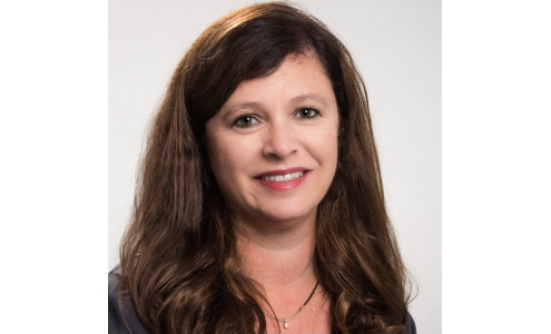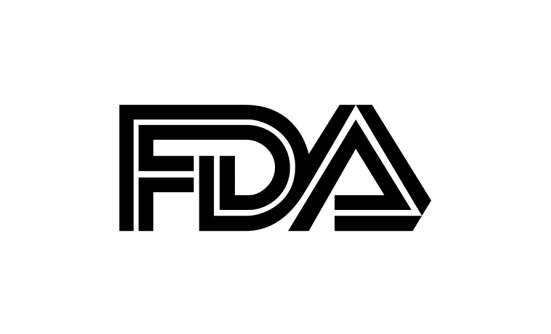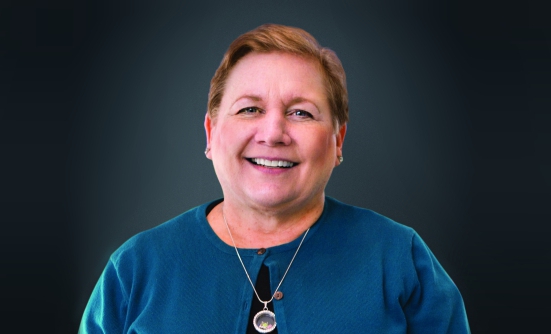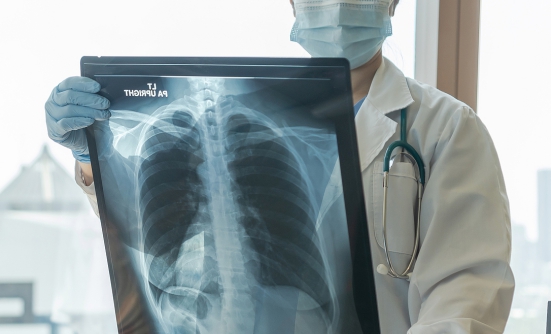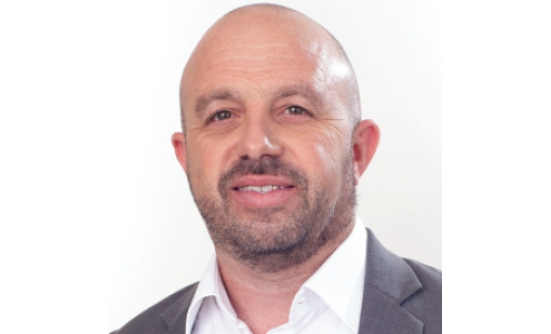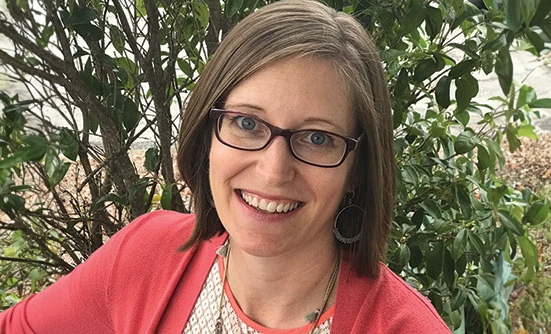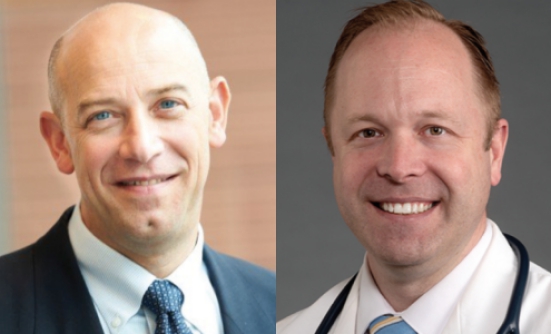I have had the privilege of being a thoracic oncology nurse navigator from September 2017 (through 2020), when I moved across country to Charleston, South Carolina, to pursue a new role in oncology navigation. I expected to do general oncology, but when I joined that Sarah Cannon cancer center, it was decided that I would focus only on navigating patients with lung cancer, and I was not enthusiastic about this at all.
You see, my uncle died of small-cell lung cancer, and my previous experience with lung cancer as a phase 1 clinical trial nurse and a general nurse navigator showed me that patients with lung cancer didn’t do well.
I now realize, however, that I entered lung cancer navigation at exactly the right time. It has been an amazing 5-year journey for me: I have continued my lung cancer navigation in my current position at the University of Chicago Medicine, and I am glad to report that in 2022, patients with lung cancer can—and do—live significantly longer than in years before.
Navigating Lung Cancer
Early-stage lung cancer has been traditionally treated with surgery and/or radiation. The options available to patients depend on their specific condition.
Lung cancer navigation usually involves working with the multidisciplinary team of experts, which was my experience in South Carolina. I worked with the entire multidisciplinary team, where I was welcomed into consults with the surgeon, and then educated patients and their family members on the results of their biopsies and the stage of the cancer, their surgeries, and post-op care. I also initiated conversations with patients after surgery about joining a clinical trial that was being offered at our institution.
Along with the thoracic surgeon, I was often the first contact patients had with a healthcare provider to discuss their lung cancer diagnosis. As the navigator, I educated them on their lung cancer diagnosis, and what to expect in their upcoming procedures. I was their point of contact, and the one they could always reach for questions or concerns before and after surgery.
I also provided survivors with a survivorship care plan and referred them to an oncologist to initiate their follow-up care. I often met the patient during that initial appointment with the oncologist.
The majority of lung cancers, including non–small-cell cancer (or NSCLC) and small-cell cancer, are diagnosed at an advanced stage. For a patient with stage III lung cancer, I would meet the patient at the first appointment to provide guidance during the treatment that involves a combination of radiation and chemotherapy. In fact, I was with the patient every step of the way.
Targeted Therapies
I first worked with targeted therapies in 2006 as a phase 1 clinical trial nurse navigator.
Targeted therapies in lung cancer are drugs that are designed specifically to target selective molecular abnormalities in our blood, or biomarkers, that are responsible for, or drive, the progress of lung cancer cells.
In 2022, we have about 11 known biomarkers that are involved in the development and spread of NSCLC, and about 35 targeted therapies that are either FDA approved or are still in the investigation stages of development for the treatment of patients with different subtypes of NSCLC associated with those molecular abnormalities.
The Importance of Biomarker Testing
If you have been diagnosed with lung cancer, please ask your oncologist if you have had biomarker testing of your tumor. If not, ask why not. In addition, ask your lung oncology nurse navigator if you had such a test.
Discussing biomarker testing is when I get the opportunity to inform my patients of what driver mutations are, and why biomarker testing is so crucial in their care to ensure they receive the best treatment available.
It is my job to reinforce what the oncologist informs patients about next-generation sequencing—a test that looks for biomarkers in cancer—and to make sure that this testing is done, or will be done soon.
If the results of the next-generation sequencing test are not yet known, because it takes about 3 weeks to get those results, I assist in obtaining a liquid (blood) biopsy from the patient. Liquid biopsy is a faster test and can reveal any circulating tumor DNA in the blood, and the results come back in 1 week.
Educating patients and their families on how crucial biomarker testing is has become an important part of a lung cancer navigator. Patients and their family members want the patient to start treatment immediately, but the medical team needs all this information from the biomarker testing to formulate the best care plan for a patient with advanced lung cancer.
Immunotherapy and PD-1/PD-L1 Expression
In 2015, Opdivo (nivolumab) became the first immunotherapy to be approved by the FDA for the treatment of a subset of patients with lung cancer. Immunotherapy represents a class of therapies that used the patient’s own immune system to eliminate the cancer cells or to control their progression.
Since then, several other immunotherapies have been approved for some patients with lung cancer. These are immunotherapies that are specifically targeting the type of biomarker known as PD-1 or PD-L1, and they have been approved by the FDA for the treatment of patients with that biomarker. Your oncology team might have mentioned that your tumor was tested for PD-1/PD-L1. If not, ask if it was.
And ask your lung cancer navigator what your PD-1 or PD-L1 tumor proportion score is, or TPS. The PD-1 or PD-L1 score identifies the lung cancer that involves the PD-1/PD-L1 biomarker, which is most likely to respond to one of the FDA-approved immunotherapies called immune checkpoint inhibitors, which specifically target the PD-1 and/or PD-L1 biomarker in NSCLC.
Resources
I also give resources to my patients that are provided by the Lung Cancer Research Foundation. I highly recommend contacting this foundation for free materials that you can then discuss with your lung cancer navigator.
The American Lung Association and the Cancer Support Community websites, as well as other organizations, also provide information on biomarker testing (see the Patient Resources box for specific links).
Patient Resources
American Lung Association
www.lung.org/lung-health-diseases/lung-disease-lookup/lung-cancer/symptoms-diagnosis/biomarker-testing
Cancer Support Community
www.cancersupportcommunity.org/non-small-cell-lung-cancer
Lung Cancer Research Foundation
www.lungcancerresearchfoundation.org/for-patients/comprehensive-biomarker-testing-for-lung-cancer/
LUNGevity Foundation
www.lungevity.org/for-patients-caregivers/navigating-your-diagnosis/biomarker-testing
A Case of Successful Lung Cancer Navigation
Let me share with you one of my recent lung cancer navigation successes. In early May 2022, I met a man whose daughter brought him to the University of Chicago Medicine after she discovered on his electronic “MyChart” (www.mychart.com) that her father had lung cancer.
He had just spent 10 days at an outside hospital, and when he presented to our clinic at the university, he was in a wheelchair, using supplemental oxygen, and clearly deconditioned from his recent hospitalization. He became short of breath easily.
The daughter stated that he had been discharged from their local hospital on a Friday without any follow-up appointments, and on Monday she saw in his personal chart that he had lung cancer. When he was discharged from the hospital, his lung test results were not available yet, and no one called them to give them the results after he had left.
She phoned our new patient coordinator and was in our clinic on Tuesday morning. Her father had not completed his lung cancer staging, but our oncologist, Dr. Garassino, thought that some of the patient’s symptoms were related to a heart condition, so he needed to involve our cardiology team, and the father admitted that he had a heart condition.
As his navigator, I provided the patient information I got from the Lung Cancer Research Foundation about his diagnosis of squamous-cell NSCLC and about molecular testing. I was educating him and his daughter about the molecular testing for his lung cancer, the reasons for doing it, and how we use the information from the molecular testing to decide on the right treatment.
I also explained that I would contact the local hospital pathology department to see if biomarker testing for PD-1/PD-L1 had been done on the specimen taken from his tumor.
I gave them my contact information and assured them that the cardiology consult will be done soon. I phoned the local pathology department and found out that the PD-1/PD-L1 test had been done, which showed a score of 10%; however, next-generation sequencing testing had not been ordered. I then sent that pathology department an order to send our patient’s tissue to Guardant Health for a next-generation test.
The patient had a cardiology consult, which recommended him to undergo a transcatheter aortic valve replacement (or TAVR) procedure, so while we were staging his tumor (still waiting for results of a PET scan and a brain MRI) and molecular testing results, the cardiologists were going to perform the TAVR intervention to replace his aortic valve.
Ten days after we met the patient for the first consult, his daughter phoned me frantically one morning. Her father had called 911, because his breathing became difficult, and she met him in the local emergency department. She wanted her father transferred to our university, but the physician in the emergency department stated, “You don’t need the university, we will care for him.”
She was frightened and said that her father also wanted to transfer to the university, because his lung cancer and cardiac physicians were there. So as his navigator, I assisted in transferring him successfully to the university.
On May 18, 2022, his TAVR was performed as an inpatient. Shortly after, we were able to focus again on his lung cancer. The patient’s condition improved considerably after his heart valve procedure, and we were awaiting additional information to determine the stage of his lung cancer.
As the navigator, I facilitated this process, and once we got the results and determined that this patient had stage IIIC lung cancer, I reached out to the radiation oncologist to ensure that he got the appropriate treatment. He started his chemotherapy and radiation, followed by immunotherapy.
By July 12, 2022, his condition improved. He was driving himself, not using supplemental oxygen, and his catheter (which had been inserted during the TAVR procedure) was removed. His daughter thanks me every chance she gets for the care coordination I provided to her dad to ensure he received the best care available.





